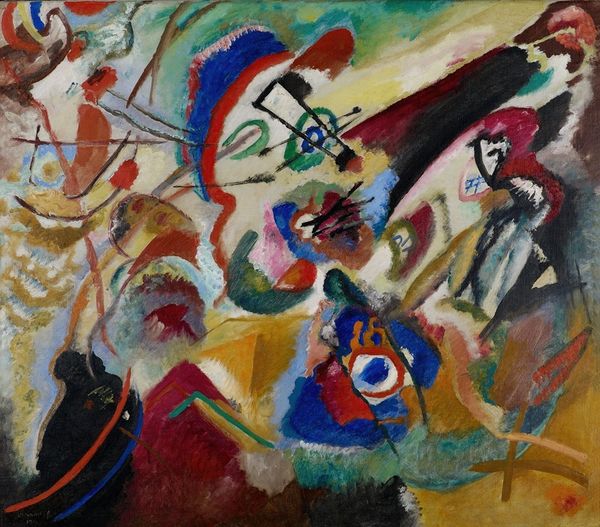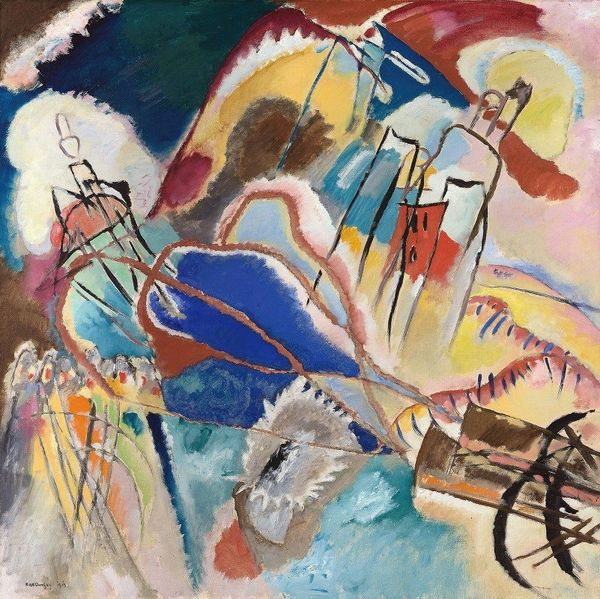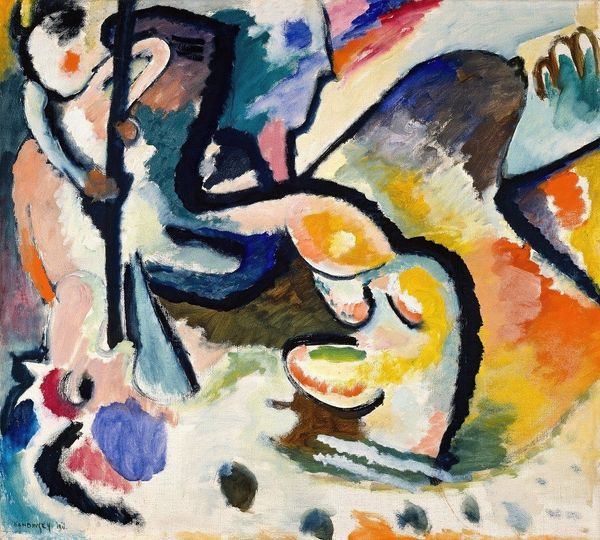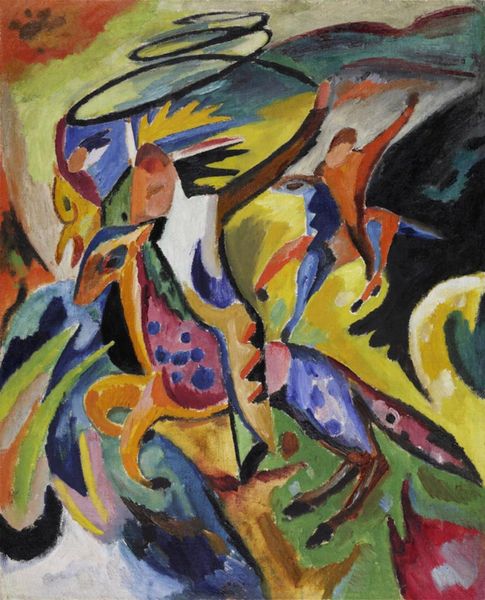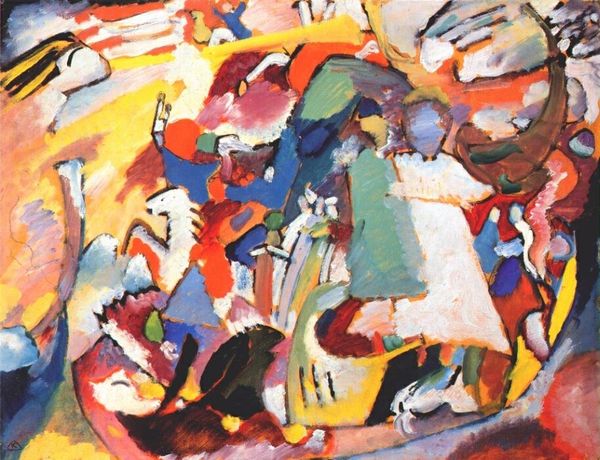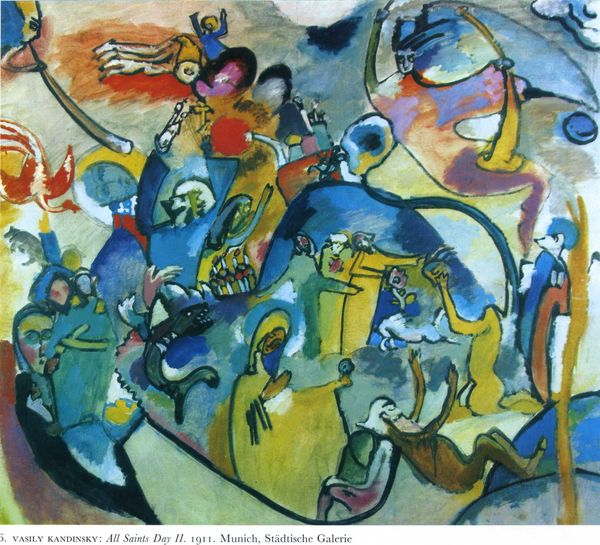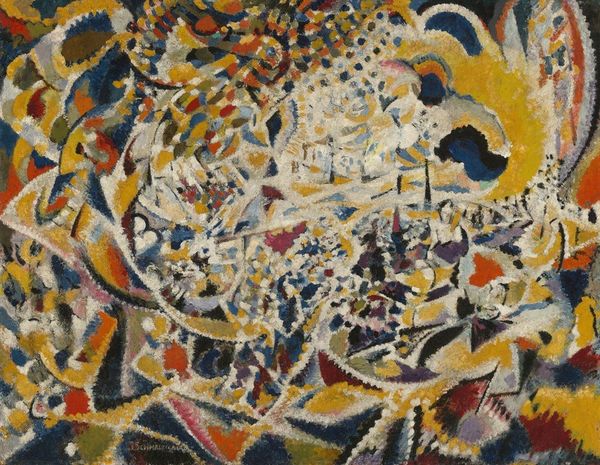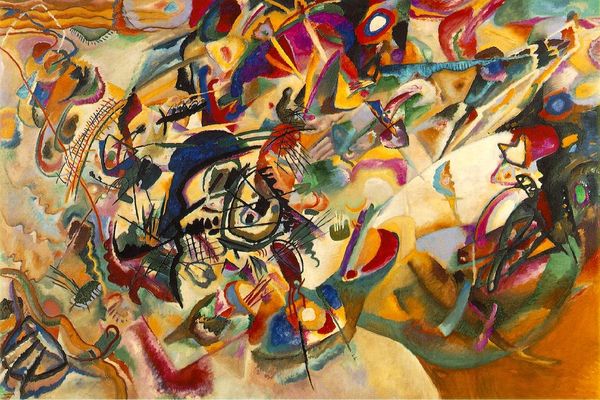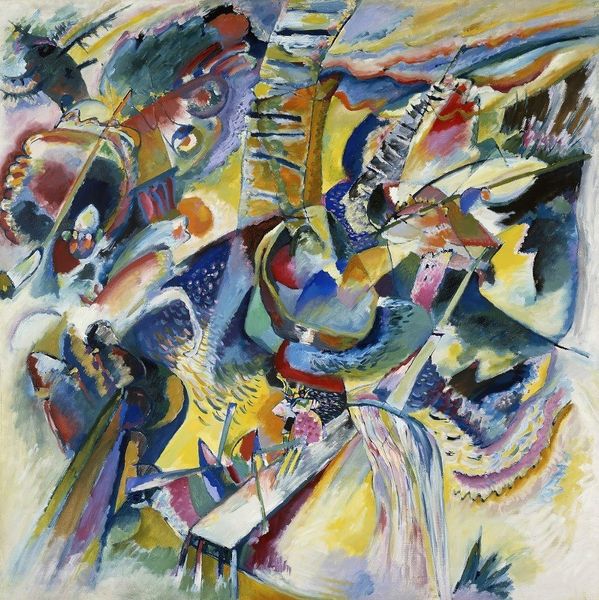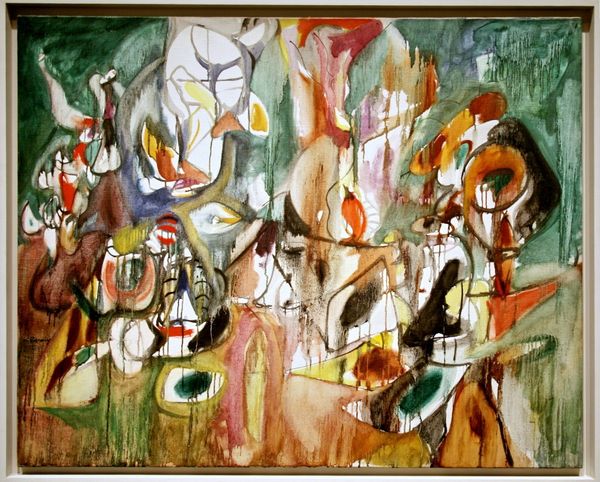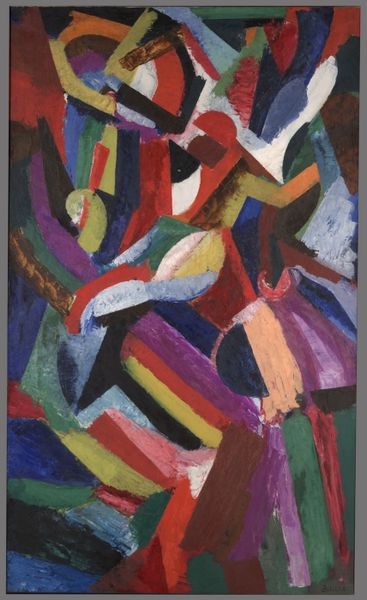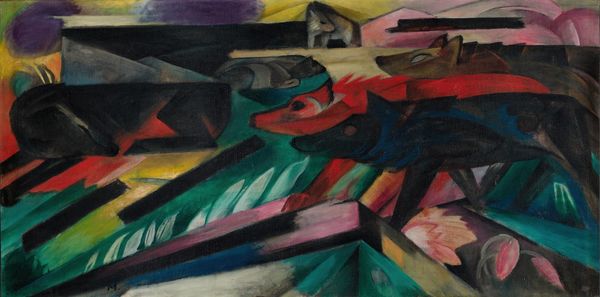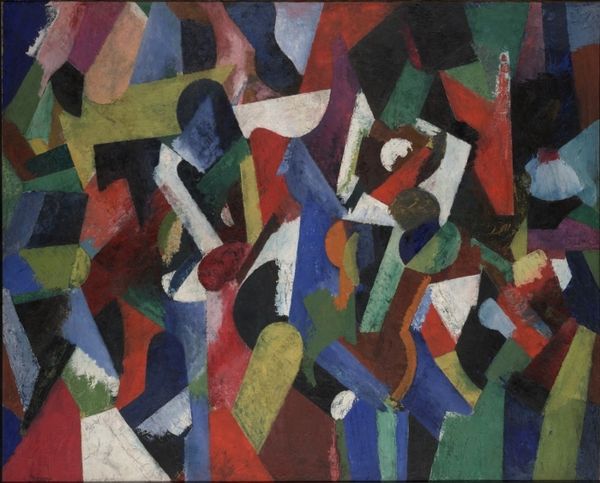
painting, oil-paint
#
abstract painting
#
painting
#
oil-paint
#
german-expressionism
#
abstract
#
geometric
#
modernism
Copyright: Public Domain: Artvee
Editor: Here we have Wassily Kandinsky's "Study for Composition VII," rendered in oil paint in 1913. It’s such a vibrant explosion of colors and forms! It almost feels like you're witnessing a chaotic yet harmonious dance. How do you interpret this work within its historical context? Curator: That sense of a "dance" is a wonderful starting point. Consider that Kandinsky painted this during a period of immense social and political upheaval in Europe, right before the outbreak of World War I. He and other expressionist artists were actively trying to forge a new visual language that spoke to internal experience, in light of rapidly changing and increasingly volatile public life. Does knowing that influence your experience of it? Editor: It does, actually. The chaotic dance I perceived could be seen as a reflection of that social turmoil, as these internal responses played out in the broader cultural consciousness. Do you see Kandinsky consciously engaging with those politics? Curator: That’s precisely the fascinating complexity! While Kandinsky sought a spiritual, rather than explicitly political, awakening, the very act of breaking from representational art can be viewed as a rebellion against the established order and its associated modes of visual rhetoric. Where did you say he situates this awakening? Editor: Well, from the title, as a "Study," does that mean that this wasn't intended as a public facing work of art at all? Curator: Exactly. Kandinsky's "Composition" series, especially this seventh iteration, can be seen as a bridge between inner turmoil and a grander, potentially public, artistic statement. The act of 'studying' indicates a grappling, not with how something should look to the public eye, but a negotiation with personal experience. He saw abstraction as key to unlocking deeper, more meaningful visual communication. It represents a bold rejection of traditional art institutions that dictated what was considered appropriate or aesthetically pleasing. Editor: So, in essence, his turn to abstraction itself was a culturally and politically charged move, regardless of whether he intended to make explicit political statements. Curator: Precisely! By divorcing art from objective representation, he sought to liberate both the artist and the viewer, urging a more subjective and emotional engagement. His study highlights how artists are always operating within and against the backdrop of socio-political currents, with art becoming a contested ground of societal values and perspectives. Editor: That's given me a lot to think about. The "Study" form might represent Kandinsky's rejection of art's traditional role. Thanks for that eye-opener.
Comments
No comments
Be the first to comment and join the conversation on the ultimate creative platform.
